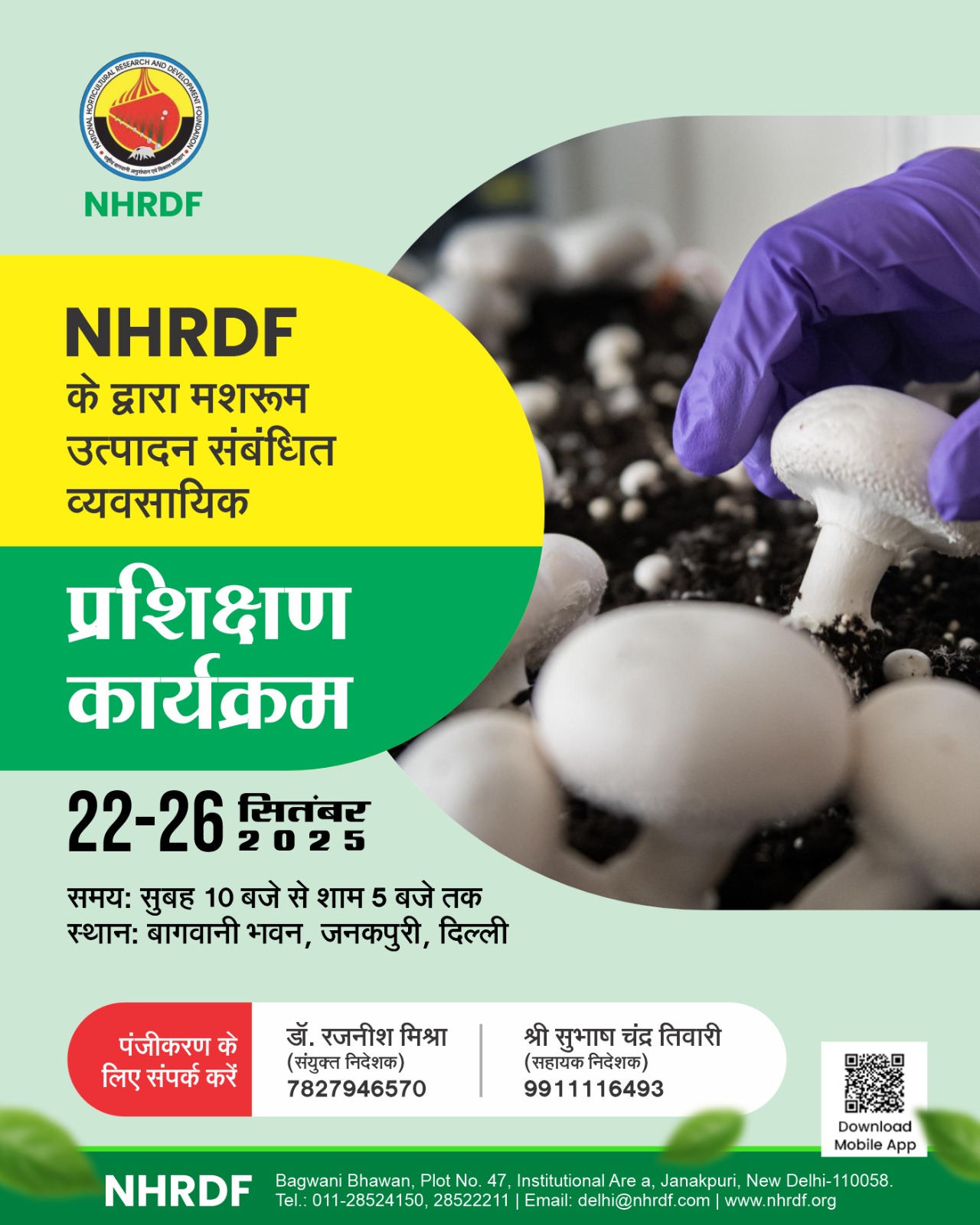My Popup


Garlic is frost hardy plant requiring cool and moist period during growth and relatively dry period during maturity of bulbs. Bulbing takes place during longer days and at high temperature, exposure to low temperature subsequent to bulb formation, favours the process. The critical day length for bulbing of 12 hrs along with, temperature also affects bulbing. Exposures of dormant cloves or young plants to temperature of around 200C or lower depending upon varieties for 1-2 months hasten subsequent bulbing.
SOIL
Garlic can be grown on a variety of soils but it thrives better on fertile, well-drained loam soils. The pH of soil between 6 and 7 is suitable for good crop. Highly alkaline and saline soils are not suitable for garlic cultivation.
PLANTING
The time of planting differs from region-to-region. It is planted from August to October in Madhya Pradesh, Maharashtra, Karnataka and Andhra Pradesh and from September to November in Northern plains of India. In Gujrat, planting is done during October-November. Proper season for planting in higher hills in Northern part is March-April. It can also be, however, planted during September-October. In West Bengal and Orissa, October-November is best time for planting.
Cloves of 8-10 mm diameter since give increased yield of better quality, care should be taken to select bigger cloves from outer side of bulbs. About 500 kg cloves of 8-10 mm diameter are required to plant one hectare.
MANURES AND FERTILIZERS
Garlic responds very well to organic manures. For a normal soil 50 tonnes of farmyard manure, 100 kg N, 50 kg P, and 50 kg K/ha and 40-50 kg S through chemical fertilizer has been recommended. Micronutrients also increase its yield potential.
IRRIGATION
In general, garlic needs irrigation at 8 days intervals during vegetative growth and 10-15 days during maturation. As the crop matures (when the tops first begin to break over or become dry) stop irrigation to allow field to dry out first. Continued irrigation as the crop matures causes the roots and bulb scales to rot. This discolours the bulbs and exposes outer cloves and decreases the market value of bulbs. Irrigation after long spell of drought results in splitting of bulbs. Excessive irrigation results in sprouting.
INTERCULTURE
First weeding is done one month after planting and second one month after first weeding. Hoeing the crop just before the formation of bulbs (about two-and-a-half months after sowing) helps in setting of bigger sized well filled bulbs. Pendimethalin @ 3.5 litres or Goal @ 0.25 kg/ha + 1 hand-weeding gives good control of broad leave weeds.
HARVESTING AND CURING
Garlic becomes ready for harvesting when its tops turn yellowish or brownish and show signs of drying up and bend over. Yamuna Safed-3 (G-282) is early-maturing cultivar. Harvesting at the stage when tops have fallen over gives good quality bulbs. Bulbs are taken out along with tops and windrowed gathering several rows in each row for curing.
YIELD
The yield of bulbs varies from 100 to 200 q/ha depending upon variety and regions.
SEED PRODUCTION
Garlic is propagated by cloves. Well-grown compact bulbs of uniform shape and size are selected. The cloves having 8-10 cm size are used for planting. The planting method and other operations followed for production of seed are the same as for bulbs production.
MINIMUM SEED CERTIFICATION STANDARDS FOR GARLIC
Government of India has prescribed seed standards for production of certified seed of garlic. The details are given as under:
Application and amplification of general seed certification standards
All certified classes shall be produced from the cloves obtained from the bulbs whose source and identity may be assured and approved by the Certification Agency.
Land requirements
Land used for seed production of garlic shall be free of volunteer plants.
Field inspection
A minimum of two inspections shall be made.
Field standards
General requirements
Isolation
The seed fields of garlic shall be isolated from the contaminants shown and distances specified should be followed (Table)
Table1: Contaminants and specified distance
|
Contaminant |
Minimum distance (m) |
|
|
|
Foundation |
Certified |
|
Field of other varieties |
5 |
5 |
|
Fields of the same variety not conforming to varietal purity, requirements for certification |
5 |
5 |
|
Contaminant |
Minimum distance (m) |
|
|
|
Foundation |
Certified |
|
Off types |
0.10 |
0.20 |
*Maximum permitted at final inspection
Note: All off type plants should rouged out along with bulbs.
Seed standards
